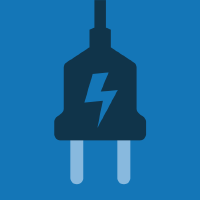Topic Editors



2. Beijing Key Laboratory of New Energy and Low-Carbon Development (North China Electric Power University), Changping, Beijing 102206, China

Intelligent, Flexible, and Effective Operation of Smart Grids with Novel Energy Technologies and Equipment
Topic Information
Dear Colleagues,
The rapid development of novel energy technologies and equipment, including renewable energy, energy storage, green hydrogen, energy production, and energy conversion and consumption devices, provides opportunities for smart grids to achieve the objectives of economic security, reliability, flexibility, and low carbon. Moreover, technological advancements cannot only control energy flow but also supply an energy load via alternative sources. However, it is difficult to adapt traditional methods to the increasingly complex and changing energy environment and ensure that they meet the requirements of rapid response and intelligent decision making. Therefore, this topic focuses on utilizing the latest innovative techniques and energy equipment to guarantee the intelligent and effective operation, control, and planning of smart grids. The goals of this Topic are as follows:
1) investigate accurate models of energy systems and equipment and explore the impact of energy equipment on energy systems;
2) coordinate the control of multiple types of energy equipment to achieve the safe, economical, reliable, flexible, and environmental operation of smart grids;
3) develop advanced energy management strategies and intelligent planning schemes to improve energy efficiency;
4) apply advanced optimization technologies and/ or artificial intelligence methods for the intelligent and effective operation, control, and planning of smart grids;
5) and realize synergy among multiple energy sources to improve the flexibility of smart grids.
Topics of interest include but are not limited to the following:
- The advanced modeling of energy systems and equipment;
- Efficient energy management strategies for smart grids;
- The intelligent control of multiple types of equipment for the safe operation of smart grids;
- The planning of multiple types of energy production, conversion, and consumption devices;
- Advanced and effective methods for the operation, control, and planning of smart grids;
- Machine learning and deep learning for the intelligent operation of smart grids;
- Control strategies for intelligent switch and protection equipment, the design of renewable energy inverters, and power electronic topologies;
- High-voltage transmission technology and the technological innovation of HVDC transmission;
- Strategies for the safe and stable operation of smart grids under extreme weather.
Dr. Pengfei Zhao
Dr. Sheng Chen
Dr. Yunqi Wang
Dr. Liwei Ju
Dr. Zhengmao Li
Dr. Minglei Bao
Topic Editors
Keywords
- multiple energy sources
- machine learning
- low-carbon planning
- operation and control
- equipment
- smart grid
- forecasting
- extreme weather events
Participating Journals
| Journal Name | Impact Factor | CiteScore | Launched Year | First Decision (median) | APC | |
|---|---|---|---|---|---|---|

Electricity
|
1.8 | 5.1 | 2020 | 26 Days | CHF 1200 | Submit |

Energies
|
3.2 | 7.3 | 2008 | 16.2 Days | CHF 2600 | Submit |

Forecasting
|
3.2 | 7.1 | 2019 | 22.9 Days | CHF 1800 | Submit |

Processes
|
2.8 | 5.5 | 2013 | 16 Days | CHF 2400 | Submit |

Smart Cities
|
5.5 | 14.7 | 2018 | 26.8 Days | CHF 2000 | Submit |

Sustainability
|
3.3 | 7.7 | 2009 | 19.3 Days | CHF 2400 | Submit |

Preprints.org is a multidisciplinary platform offering a preprint service designed to facilitate the early sharing of your research. It supports and empowers your research journey from the very beginning.
MDPI Topics is collaborating with Preprints.org and has established a direct connection between MDPI journals and the platform. Authors are encouraged to take advantage of this opportunity by posting their preprints at Preprints.org prior to publication:
- Share your research immediately: disseminate your ideas prior to publication and establish priority for your work.
- Safeguard your intellectual contribution: Protect your ideas with a time-stamped preprint that serves as proof of your research timeline.
- Boost visibility and impact: Increase the reach and influence of your research by making it accessible to a global audience.
- Gain early feedback: Receive valuable input and insights from peers before submitting to a journal.
- Ensure broad indexing: Web of Science (Preprint Citation Index), Google Scholar, Crossref, SHARE, PrePubMed, Scilit and Europe PMC.



